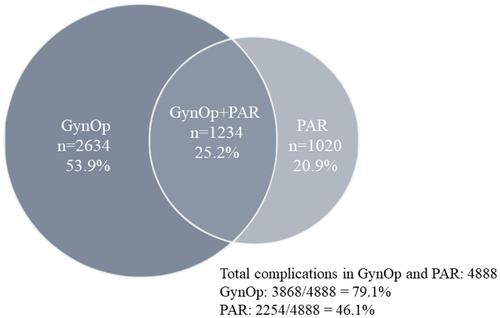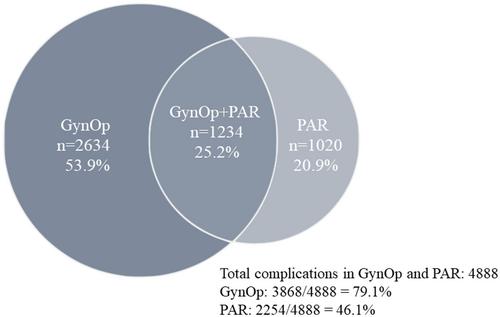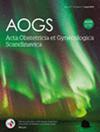Complications after benign gynecologic surgery—How are they captured in register-based research? A national register study in Sweden
Abstract
Introduction
The evidence on complication rates after gynecological surgery is based on multiple types of studies, and the level of evidence is generally low. We aimed to validate the registration of complications in the Swedish National Quality Register of Gynecological Surgery (GynOp), by cross-linkage to multiple national registers.
Material and Methods
A national register-based study using prospectively collected data was conducted, including women who had surgery on the uterus or adnexa for benign indications from January 1, 2017, to December 31, 2020. In Sweden, complications after gynecological surgery are registered in GynOp, and if the complication has rendered any interaction with healthcare, it is also in national health registers. The GynOp register, the National Patient Register, the Prescribed Drugs Register, and the Cause of Death Register were cross-linked. Complications in GynOp and complications according to ICD10 were analyzed, as well as the cause of death if occurring within 3 months of surgery and prescription of antibiotics ≤30 days. Comparisons between the registries were descriptive.
Results
During the study period 32 537 surgeries were performed, of which 26 214 (80.6%) were minimally invasive. Complications were reported in GynOp for 569 women (1.7%) at surgery, 1045 (3.2%) while admitted, and 3868 (13.7%) from discharge to 3 months after surgery. In comparison, according to the Patient Register, 2254 women (6.9%) had postoperative complications within 3 months of discharge (difference of 6.8 percentage points [95% confidence interval 6.2–7.2]). Furthermore, 4117 individuals (12.7%) had a prescription of antibiotics ≤30 days which could indicate a postoperative infection. The rates of hemorrhage, wound dehiscence, and thrombosis were comparable between GynOp and the Patient Register while diagnoses not leading to contact with specialized care had higher rates in the quality register. The coverage of complications was 79.1% in GynOp and 46.1% in the Patient Register, using the total number of complications from both registers as the denominator.
Conclusions
A higher frequency of complications is captured in GynOp than in the National Patient Register. Patient-reported outcomes assessed by a physician are beneficial in identifying complications indicating the importance of structured pre-defined follow-up over a set period.



 求助内容:
求助内容: 应助结果提醒方式:
应助结果提醒方式:


